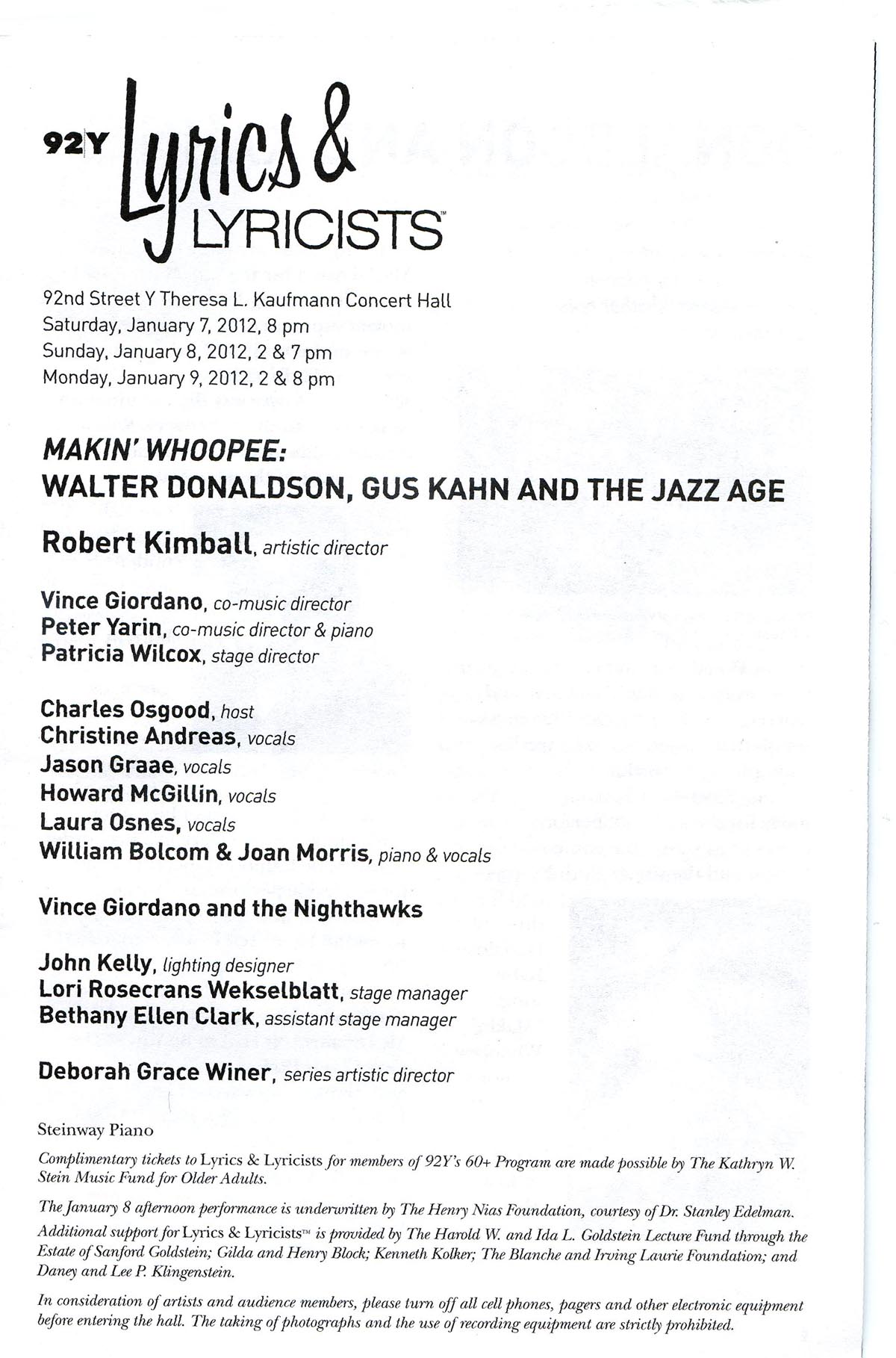
A
Review of the
Albert Haim
The theme of the 2012 Season at the
The Program.


< style="font-family: helvetica,arial,sans-serif;"><><>
Walter Donaldson (Feb 15, 1893 Brooklyn, NY – Jul 15,
1947
Santa Monica, CA) composed about 600 songs for Tin Pan Alley, Broadway
and
Gus Kahn (Nov 6, 1886 Koblenz, Germany – Oct 8, 1941
Beverly
Hills CA) was a lyricist who wrote about 350 songs for Tin Pan Alley,
Broadway
and
Walter Donaldson and
Gus Kahn collaborated in more than 100
songs. Bix recorded several songs penned by Donaldson, Kahn or by both:
Oh Baby! (D); Susie (K); I Need Some Pettin
(K); There
Ain’t No Land Like Dixieland
(D); Changes (D); Mary (D); A Shady Tree (D); Chloe
(K); Coquette (K); My Ohio Home (D&K; Fox
Movietone
News); Japanese
Mammy (D
& K); Because
My Baby Don’t Mean Maybe Now
(D); Borneo (D); Out Of Town Girl (D); I’m
Bringing A Red Red Rose (D & K); Reaching
for Someone (D).
As I indicated above, the numbers featured a wide variety of styles and periods, clearly a huge challenge. The singers did well, but behind all, there was the genius and enormous versatility of Vince Giordano and of the musicians in his band, men who understand (and can reproduce faithfully) the stylistic changes that took place in going from the nineteen teens to the twenties and to the thirties. The concert started with the Nighthawks playing a medley that included the beautiful Hiawatha Serenade and the relatively unknown You. . The musicians could bring out, in an authentic manner, the call and response of Bix (played by Jon-Erik Kelso) and Tram (played by Dan Block) in Borneo, the sound of three clarinets (Dan Block, Mark Lopeman and Dan Levinson) playing in huge horns a la Hal Kemp, a bit of Charleston in Yes Sir, That’s My Baby and a Dixieland interpretation of San Francisco. Individual musicians took some solos - Vince on bass saxophone, Andy Stein on his Stroh violin, for example. But the whole band also played songs that sounded fresh today although they were composed decades ago - ballads, jazz, a waltz. It was like jumping into a time machine, going back through the years and stopping at various times to see and listen what was in fashion at that moment. The band was right in front or quietly went into a supporting role or even stopped playing altogether, except for the rhythm, as the numbers required. It takes a first-class outfit to know when to go into the background and when to come into the foreground.
Coda.
Kudos to all the people involved in the production: those who conceived the idea, those who developed it, and those who executed it. A rare display of artistic excellence with music and lyrics created in the first decades of the 20th century and brought back to life, by highly talented individuals, in the second decade of the 21st century.